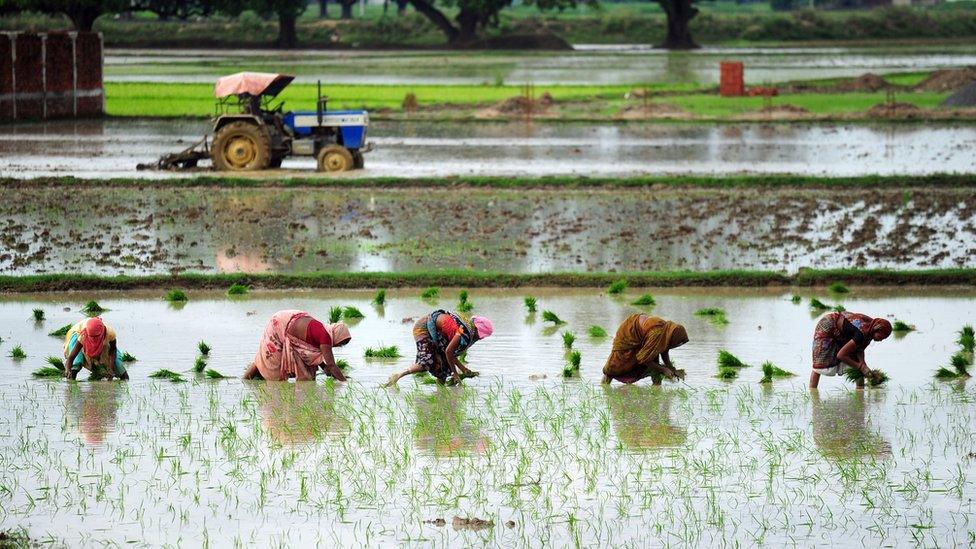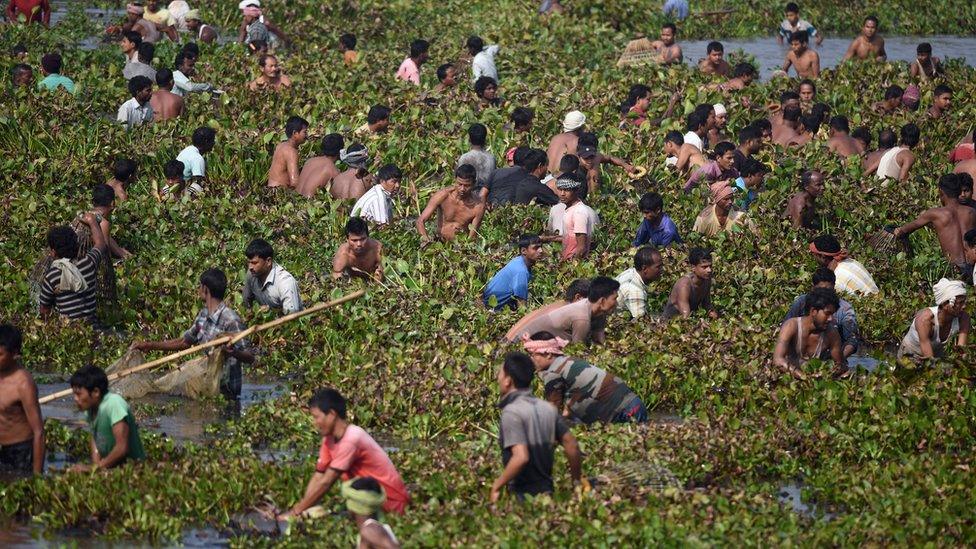India Budget 2017: Spending to get out of trouble
- Published

India's government is trying to spend its way out of the trouble caused by last year's decision to ban high value notes in a crackdown on corruption, writes columnist Vivek Kaul.
Increased government spending will be responsible for one-third of the increase in the country's Gross Domestic Product (GDP) in 2016-2017, latest government figures show.
What this essentially means is that the government will primarily drive economic growth in the current financial year.
This is likely to continue in 2017-2018 as well. The annual budget presented by Finance Minister Arun Jaitley on Wednesday seems to suggest as much.
The government has allocated 480bn rupees ($7.1bn; £5.6bn) to a scheme which guarantees every rural household 100 days of work each year. This is the highest allocation ever made to the programme.
Softening the rupee ban blow
The increased spending on the programme is intended to alleviate the negative impact of the government decision to ban high value notes in rural and semi-rural areas of India. A majority of transactions in these areas happen in cash, which has been in short supply since the rupee ban in November last year.
The jobs guarantee programme is also intended to alleviate the impact of the rupee ban on the informal manufacturing sector which operates in cash and tends to employ many semi-skilled and unskilled people who migrate to cities from rural India.
The government has also increased the allocation to an affordable housing scheme by more than 50% to 230bn rupees which is also expected to create some employment in rural India. Close to half of India's population is engaged in agriculture which contributes only around 18% of GDP.

The rural economy was badly hit by the rupee ban in November last year
The allocation to 29 schemes sponsored by the central government has gone up by 21.6% and the allocation to the infrastructure sector has gone up by 13.5%.
Over and above this, the government has increased the lending target to a scheme that gives loans at low interest rates to micro-finance institutions and non-banking finance institutions. These in turn lend money to micro and small business entities engaged in manufacturing, trading and services activities.
Rural spending promise in India budget
India admits rupee ban bad for economy
To cut a long story short, the Modi government is trying to spend its way out of trouble, but it is not going overboard with it.
A part of this pump-priming became necessary because of the government's rupee ban self-goal, which is expected to pull down economic growth in 2016-2017.
The Economic Survey for 2016-2017 released on Tuesday, projected GDP growth at between 6.5-6.75% in 2016-2017, down from 7.9% in 2015-2016. The question is what economic growth could have been without the rupee ban.
Too many schemes
When pushed in to a corner, most governments try to spend their way out of trouble.
Nevertheless, government spending is not always as effective as private spending. In the Indian case, a major reason is massive leakage. This means that a large portion of government spending does not reach those it is meant for and is instead, siphoned off by the bureaucracy expected to distribute it.
One way to tackle this is for the government to concentrate on running a few important schemes on which it can spend the bulk of its money and focus its time and attention on.
The Economic Survey points out that "the Budget for 2016-17 indicates that there are about 950 central sector and centrally sponsored sub-schemes in India".
One negative impact of running so many schemes is that "in many cases, the poorest districts are the ones grappling with inadequate funds. This is evidence of acute misallocation."
A very important part of economic reform in India would be to bring down the number of these schemes. But that, as they always say, is easier said than done.
And as always, this budget missed out on this opportunity as well.
Vivek Kaul can be reached at vivek.kaul@gmail.com